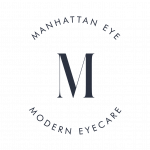Home » For Patients » Styes
STYES
Stye Specialist and Treatment In New York City
Dr. Rapoport provides individualized treatment to each stye and provides a customized prevention plan to ensure that the underlying condition of clogged oil glands is treated and the stye does not recur again
STYE SPECIALIST & TREATMENT NYC
STYE FAQS
What is a Stye?
If you have a swollen painful eyelid, you may have a stye. These are very common and can lead to an uncomfortable heavy feeling and an embarrassing appearance. Timely and effective treatment is key to getting rid of these early so they do not become exacerbated and difficult to treat.
A stye, also known as a hordeolum, is a bacterial infection of an oil gland in the eyelid. This results in a red tender bump at the edge of the eyelid. The outside or the inside of the eyelid can be affected.
The cause of a stye is usually a bacterial infection by Staphylococcus aureus. The internal ones are due to infection of the meibomian while the external ones are due to an infection of the gland of Zeis. A chalazion on the other hand is a blocked oil gland without infection. A chalazion is typically in the middle of the eyelid and not painful.
Often a stye will go away without any specific treatment in a few days or weeks. Recommendations to speed improvement include warm compresses, or boiling an egg or baking a potato- the point is to hold as much heat to the stye as possible.
Occasionally steroid/ antibiotic eye ointment may be recommended. Styes often recur frequently unless the underlying condition of blepharitis or meibomian gland dysfunction is addressed and preventative measures are taken. Styes can occur seemingly all of a sudden, at any given age. They do not have to do with skin condition, lid hygiene, or diet.
What are Signs and Symptoms of a Stye?
The first sign of a stye is a small, yellowish spot at the center of the bump on an eyelid that develops and expands in a local area.
Other stye symptoms may include:
A lump on the top or bottom eyelid
Localized swelling of the eyelid
Localized pain
Redness
Tenderness
Blurred vision
Mucous discharge in the eye
Irritation of the eye
Crusting of the eyelid margins
Burning in the eye
Droopiness of the eyelid
Scratchy sensation on the eyeball(itching)
Light sensitivity
Tearing
Discomfort during blinking
Sensation of a foreign body in the eye
What Can Happen?
Stye complications occur in very rare cases. However, the most frequent complication of styes is progression to a chalazion that causes cosmetic deformity, corneal irritation, and often requires a steroid injection or incision and drainage. Large styes may interfere with one’s vision.
Another potential complication of a stye is eyelid cellulitis, also called preseptal cellulitis is a skin infection of the eyelid. The eyelid is more red, painful, and can be warm to the touch than just a stye. If eyelid cellultis develops, it is treated with both topical and oral antibiotics, in addition to the other stye treatments already mentioned.
Very rarely, if eyelid cellulitis is not treated, it can spread to orbital cellulitis. Orbital cellulitis means the infection affects the tissues behind the eye and has spread further back. This is more dangerous because it can potentially spread to the brain. Signs of orbital cellulitis include double vision, decreased vision in the affected eye, red and painful eye, mucus in the eye, and occasional fever. In addition to the regular treatment for preseptal cellulitis and styes, occasionally hospital admission and IV antibiotics are necessary if orbital cellulitis is diagnosed.

What Can I Do To Prevent Styes?
Upon awakening, application of a warm washcloth to the eyelids for one to two minutes may be beneficial in decreasing the occurrence of styes by liquefying the contents of the oil glandsof the eyelid and thereby preventing blockage. This can be followed by using an over the counter eyelid cleansers such as Avenova or Ocusoft.
To prevent developing styes, it is recommended to never share cosmetics or cosmetic eye tools with other people. People should also keep their eye tools clean and generally practice proper eye hygiene. It is also recommended to remove makeup every night before going to sleep and discard old or contaminated eye makeup.
People with styes should avoid eye makeup and eye cream. People are advised not to lance the stye themselves, as serious infections can occur.
What is the Treatment Once I Develop a Stye?
Once you seek treatment, you may be prescribed a steroid / antibiotic ointment to use nightly over the affected eye.
Oral antibiotics are sometimes given to people with multiple styes or with styes that do not seem to heal, and to people who have blepharitis or rosacea.
If resolution does not occur, a combination of a steroid and anti scarring medication can be injected into the stye. If resolution still does not occur, incision and drainage can be performed within the office under topical anesthesia. The procedure consists of making a small incision on the inner or outer surface of the eyelid, depending if the stye is pointing externally or not. After the incision is made, the pus is drained out of the gland and antibiotic ointment is placed over the incision.
WHY CHOOSE MANHATTAN EYE?

Stye Treatment with Dr. Rapoport in NYC
At Manhattan Eye, Dr. Rapoport provides individualized treatment to each stye and provides a customized prevention plan to ensure that the underlying condition of clogged oil glands is treated and the stye does not recur again. By focusing on a wellness prevention approach, Dr. Rapoport allows for a more conservative treatment plan. Dr. Rapoport also provides facetime consultation if you are not able to make it into the office for these uncomfortable situations.
“I've been essentially blind my whole life and recently decided to get elective eye surgery. I unfortunately did not qualify for Lasik, but did qualify for PRK.
Dr. Rapoport was fantastic - she explained all my options in detail and was very diligent in giving me instructions pre/post operations - even when I asked twice/three times. She's always available to talk and super empathetic. I could not recommend a better eye surgeon!”
Dr. Rapoport was fantastic - she explained all my options in detail and was very diligent in giving me instructions pre/post operations - even when I asked twice/three times. She's always available to talk and super empathetic. I could not recommend a better eye surgeon!”
M.V.
“Best eye doctor in New York! Dr. Rapoport is very personable, professional and most importantly a great doctor. Dr. Rapoport recently performed my LASIK surgery, for which she gave me clear pre and post-op instructions and made a point to check regularly on my progress. She did a great job to put my nerves at ease and walked me through the entire process. Now three weeks after the surgery I
can see better than ever with 20/20+ vision! I strongly recommend Dr. Rapoport if you are considering LASIK, or if you are simply in need of a great eye doctor.”
N.G.
“I have now seen Dr. Rapoport for dry eyes, removal of papillomas around my eyes, and Lasik
surgery. My experiences with her have all been wonderful. She always takes the time to
explain everything really clearly, and my results have all been great. When I originally asked
about Lasik, she gave me a very balanced perspective on my options, which I really
appreciated. She also has a great energy about her, and she's just an overall pleasure to be
around. I have referred several friends and family to her and they've all said great things about
her as well. I can't recommend her enough.”
M.T.
“After seeing Dr. Rapaport for three months I have experienced the greatest improvement for
my dry eye syndrome than I have in the past 15 years. Dr. Rapaport is very knowledgable and
caring. I am very grateful to her and her staff, in particular to Amy, who has been incredibly
helpful to me. Everyone here conducts themselves in a highly professional manner, and they
also run a tight ship in terms of timeliness. I have been seen every time without waiting any
more than 5 minutes, and this I appreciate a lot. I feel very fortunate to be a patient at this
medical practice.”
H.K.
“Dr Rapoport is a skilled, knowledgeable, sincerely caring medical professional. I started
seeing her a year ago and have since moved out of state. Regardless, it’s a priority for me to
continue under her good care.
I feel confident in her abilities - and it is my eyesight afterall!”
I feel confident in her abilities - and it is my eyesight afterall!”
P.J.




